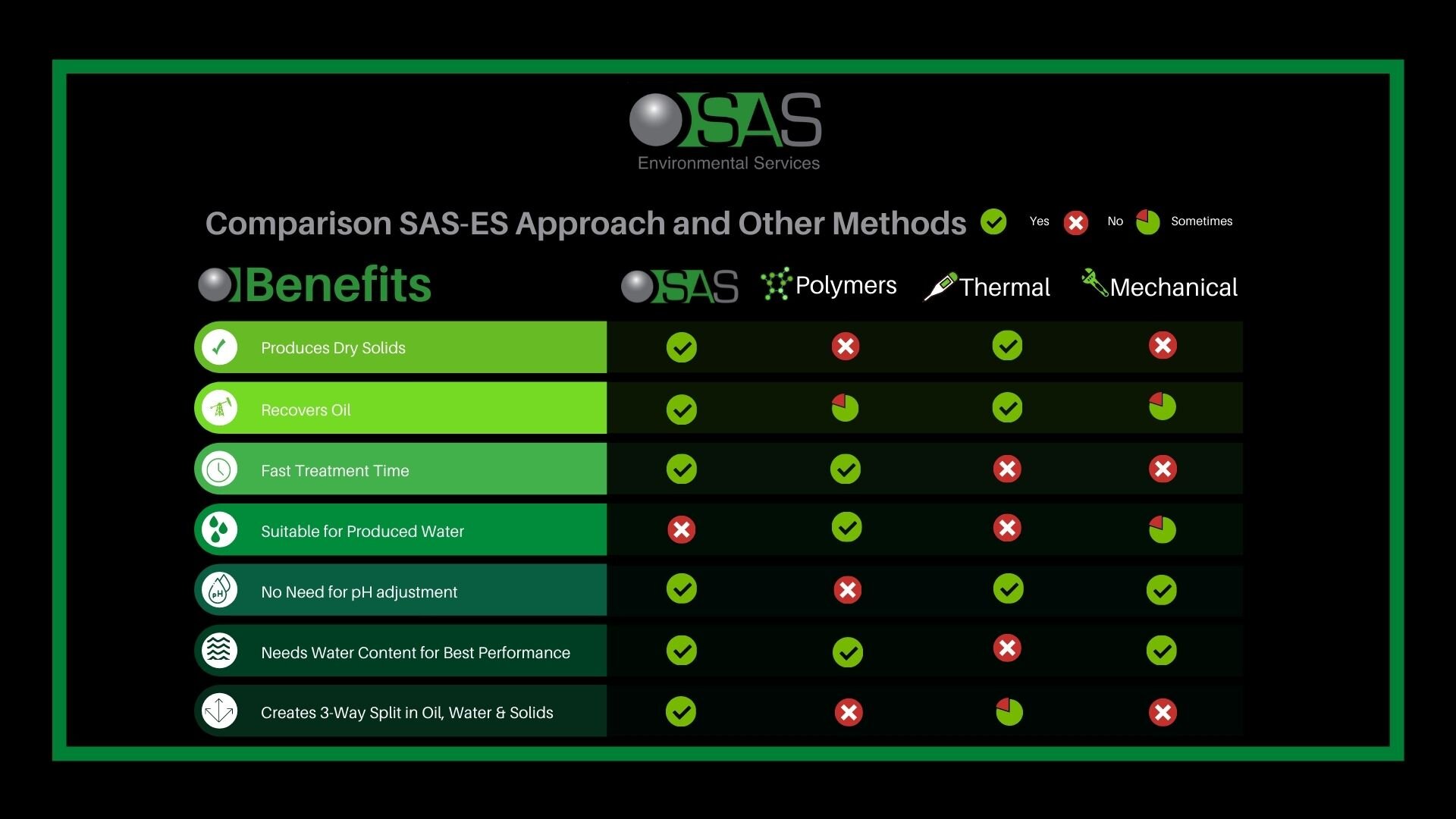Liquid waste challenges and how to overcome them
/Many of our clients come to us with liquid waste of some type. This is often drilling slops or some kind of oily liquid from refinery processes, pipeline cleaning or even waste oil collection. A much used approach to this waste has traditionally been to de-water it. This works by removing the water as much as possible from the waste and so reduces the volume of the waste.As Wikipedia defines it:
“Dewatering /diːˈwɔːtərɪŋ/ is the removal of water from solid material or soil by wet classification, centrifugation, filtration, or similar solid-liquid separation processes, such as removal of residual liquid from a filter cake by a filter press as part of various industrial processes.”
Which is a pretty good way of putting things really. However, we at SAS Environmental Services believe there are some drawbacks when it comes to de-watering waste. First of all the oil and solids that remain usually have a very high water content. This means that although some or even most of the water is removed from the waste there is still plenty left. This water is bound up with oil and solids to create a thick sludge. This sludge is then almost impossible to break and often only incineration is effective.
The second issue with de-watering is the limited effective area where the chemistry will work. Once solids content of the waste is over 3 – 5% of the total waste stream the de-watering chemistry quickly becomes less effective. This also applies to the oil content of the waste. Once the oil content reaches over 3% many of the products available no longer de-water effective.
The SAS Difference
The key difference when using SAS Environmental Services Sloptreat or SludgeTreat products is that our chemistry is at its best when solids and oil content is higher. Our best results are usually with the worst waste.
The key point is that our unique chemistry unlocks the capability to treat these hard to handle oil slops and oil sludge waste materials. However, it is the combination of process, engineering, chemistry and decades of oil waste treatment expertise that helps us help you.
Oil waste treatment is rarely as easy as adding chemical A to waste X. A thorough understanding of the nature of the waste, the results you, the customer, need to achieve and a deep knowledge of the unique capabilities of our chemistry are all elements needed for success.
Over the past 20 years we have helped find solutions to some of the trickiest and hardest oil waste problems in the world. If you have oil waste to treat do give us a call or send us a message. We helped all the others, we can help you.
Download our Liquid Waste Whitepaper to discover different treatment solutions and their advantages.


